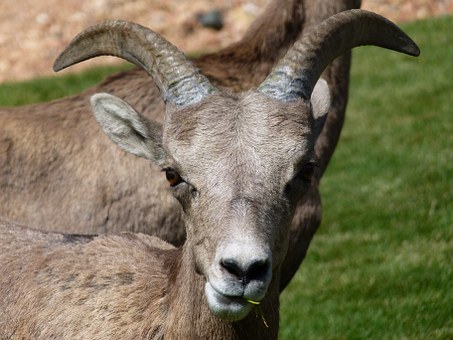Traditional English Christmas - Facts

Traditional English Christmas - Facts
Traditional English Christmas - FactsEngland is famous for its Traditional Christmas and as a born and bred Englishman, My Christmas involved family reunions, Christmas Dinner and watching the Queens Speech at 3pm.
Queens Christmas Speech

The Sovereign King George V appeared on the radio on Christmas Day 1932. This happened every year until 1957 when Queen Elizabeth II appeared on Television, Christmas Day at 3pm. The Christmas Broadcast is an intrinsic part of Christmas Day festivities and is broadcast UK and Commonwealth wide and In 2003, over 10 million viewers in Britain alone, settled down to watch the Broadcast on Christmas Day.
Christmas Tree
Not the oldest of traditions, the Christmas tree may have originated in Germany, but it is very popular in England, too. The first Christmas tree in England was the one Prince Albert, the spouse of Queen Victoria, placed in their royal home in 1837. There are lots of trees in public places as well, the most famous being the huge one in Trafalgar Square which is given to the UK by Norway as a thank you for our help during WW2.
Christmas Cards
Christmas cards are sent off to relatives, friends, loved ones and business contacts at the begining of December. This was invented by us English and dates back to 1840, and every year more than one billion Christmas cards are sent in Great Britain - December is decidedly not the easiest month to be a postman in England.
Advent Calender
The modern advent calendar consists of a carboard surround, usually decorated in some popular culture or chocolate-related theme which has been adjusted to look Christmassy, bearing at least 24 little doors. Behind each door will be a moulded Christmas-related shape, and there may also be small picture on the inside of the door or on the cardboard behind the chocolate. The chocolate will probably sit in a plastic tray, and may be protected by a layer of foil which is best slit open using a fingernail. Advent calendar traditions include the 24th chocolate or door bearing the words 'Santa's Coming' or a depiction of a Nativity scene, and the person opening the calendar guessing which Christmas-related item will be depicted behind each door.
Christmas Holly
It is to be noted that here in England, a strong distinction is made between the 'he holly' and the 'she holly', based on the nature of the leaves. The 'he holly' is characterized by prickly leaves while 'she Holly' is characterized by the smooth surface of the leaves. The Holly, which is strongly linked with Christmas or rather Christmas festival, has a history of its own. Though Christmas Holly history has its roots in Northern Europe, the sanctity of the Holly plant has a pagan origin. The Holly plant is characterized by green leaves that are prickly in nature. It needs a mention here that the Druids adorned their heads with twigs of the Holly plant whenever they went to the forest.
The Holly Man
The Holly Man, the winter guise of the Green Man (a character from pagan myths and folklore), decked in fantastic green garb and evergreen foliage, appears from the River Thames every January. The Green Man is thought to represent life, death, fertility and rebirth. He brings nature and mankind together. The Green Man is usually depicted in carvings with leafy vines growing around his body, from his face, mouth, eyes, nose and ears.
Mistletoe
We English don't stop at pine trees: holly and mistletoe are equally essential natural Christmas decorations. Mistletoe's popularity obviously has something to do with the custom of kissing the person with whom you stand underneath it - a tradition that allegedly dates back to Pagan Britain and ancient Roman times, when enemies who met under it were said to have to give up their rivalries.
Wassail
Wassail is an ale-based drink seasoned with spices and honey. It was served from huge bowls, often made of silver or pewter. Wassail comes from an old English term 'waes hael' meaning to be well. In Saxon times the Lord of the Manor would shout this to the crowds and they would all drink an ale based drink. This tradition continued over time as people would go from house to house with the drink and Christmas food. Some parts of the country especially in rural areas still go 'a wassailing' in January - usually the 17th which was the old twelfth night. While it's not called wassailing nowadays you'll also find that people in England will still go visiting neighbours for a glass of mulled wine (or something else alcoholic) and a mince pie. The Wassail bowl would be passed around with the greeting, 'Wassail'. Wassailing has been associated with English Christmas and New Year as far back as the 1400s. It was a way of passing on good wishes among family and friends.
Christmas Carols
The earliest carol was written in England in 1410. Sadly only a very small fragment of it still exists. The carol was about Mary and Jesus meeting different people in Bethlehem. Most Carols from this time and the Elizabethan period are based on untrue stories, very loosely based on the Christmas story, about the holy family and were seen as entertaining rather than religious songs. They were usually sung in homes rather than in churches! Traveling singers or Minstrels started singing these carols and the words were changed for the local people wherever they were traveling.
Perhaps the most famous carol service, is the service of Nine Lessons and Carols from King's College in Cambridge, UK. This service takes place on Christmas Eve and is broadcast live on BBC Radio (and all over the world). In my house, we listen to it and it means Christmas has really started!! The Service was first performed in 1918 as a way of the college celebrating the end of the First World War. It is always started with a single choir boy singing a solo of the first verse of the Carol 'Once in Royal David's City'.
Boxing Day
Boxing Day officially began in England in the middle of the 19 century under the rule of Queen Victoria. However, many adults and children do not know the true meaning of Boxing Day and its reasons for celebrating. It was a day to thank the community for all their effort throughout the years. The maids, drivers and other service workers were thanked with gifts of food, money, clothing, and other goods. It is important to teach students how they can contribute to society and to understand not all families are able to provide for their families all of the time. The countries that celebrate Boxing Day includes Great Britain, Canada, Australia, New Zealand and other Commonwealth Countries celebrate Boxing Day on December 26th.
Twelth Night Twelve Days of Christmas and Lights and Decorations
Twelfth Night (5th January) is when all Christmas Lights and Decorations should be removed so as not to bring bad luck upon the home. If decorations are not removed on Twelfth Night, they should stay up all year.
Nativity Play
Another eagerly awaited event in the run-up to Christmas is the nativity play: each year hundreds of thousands of school children act out the story from the Bible about the birth of Christ. They dress up as Joseph, Mary, Jesus, the shepherds and the three Wise Men - and occasionally children get to don ox and donkey costumes.
Pantomines
Pantomimes are cheerful musical interpretations of classic fairy tales that are performed by professional or amateur actors - and the audience: crowd participation is a big part of pantomime fun. Pantomimes became popular in England in the 1500s. There are Pre-Christian roots to the pantomime, most notably the playing of men by women and the other way around. This probably stems back to the pagan winter festivals, where roles were reversed in plays: males would play females; masters, servants and children would play parents.
English Christmas Food
Christmas dinner is very traditional and includes a variety of the following: Turkey, Sage and Onion or Sausage or Chestnut Stuffing, Cranberry sauce, brussel sprouts, roast potato's, English mustard or Mint Sauce and for afters either: Mince pies, chocalate Yule Logs, iced fruit cake, Christmas Pudding,Shortbread or Cheese and Crackers.
Christmas Crackers
The most original English Christmas tradition, however, is the Christmas cracker: the popular small paper tubes with little gifts inside were invented by a baker from London in the mid 19th century and have gone on to conquer the world. It is traditionally opened by two people who each pull on one end of the cracker until it, well, cracks. Merry Christmas!
Father Christmas plus his Sleigh and Reindeers
Father Christmas (In Victorian England he was dressed in a Red Robe not like the made up american santa with trousers etc.) was originally part of an old English midwinter festival, normally dressed in green, a sign of the returning spring. He was known as 'Sir Christmas', 'Old Father Christmas' or Old Winter'.
In this earliest form, Father Christmas was not the bringer of gifts for small children, nor did he come down the chimney. He simply wandered around from home to home, knocking on doors and feasting with families before moving on to the next house.
The Ghost of Christmas Present in Charles Dickens' A Christmas Carol (1843) is based on Father Christmas. He is described as a large man with a red beard and fur-lined green robe.
Images of Father Christmas (Santa Claus) dressed in red started appearing on Christmas cards in the late Victorian times.
Please visit my Funny Animal Art Prints Collection @ http://www.fabprints.com

My other website is called Directory of British Icons: http://fabprints.webs.com
The Chinese call Britain 'The Island of Hero's' which I think sums up what we British are all about. We British are inquisitive and competitive and are always looking over the horizon to the next adventure and discovery.
Copyright 2010 Paul Hussey. All Rights Reserved.
http://www.articlesbase.com/journalism-articles/traditional-english-christmas-facts-2710770.html Dinodirect.com---Your Shopping Paradise Amsterdam: A Trip through History Travel around the World Adventurous travel packages to Leh Why Singapore Is The Most Ideal Place To Start A Company Why Europeans Look Down Upon Americans Exciting travel packages to Tirupati South African Web Hosting Just Bling Watches And Amazon Team Up To Provide Free Overnight Shipping For The Holiday Northern Cyprus Holidays | Cyprus Holidays | Beach Holidays Links Of London - I am excited with you The Perfect Christmas Turkey Recipe Day Trips and Tours in Holland